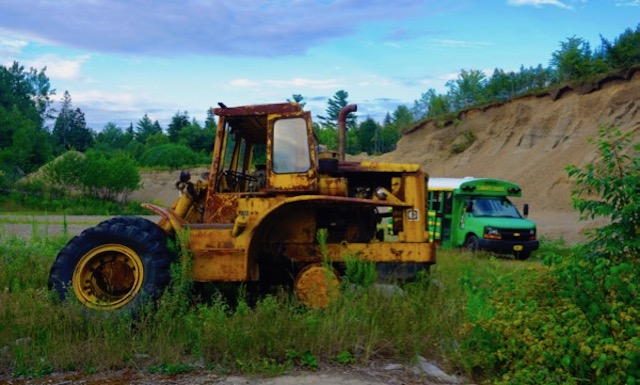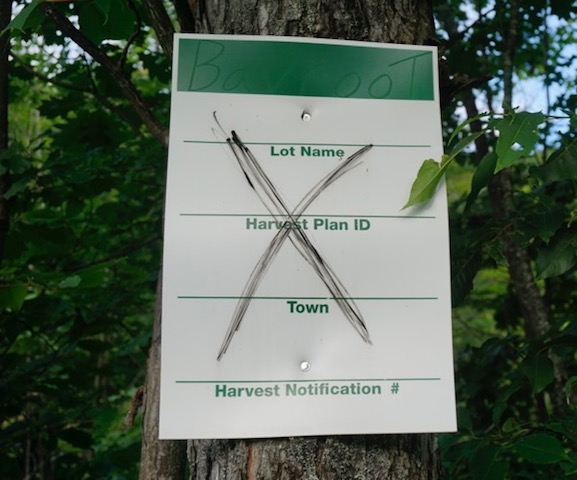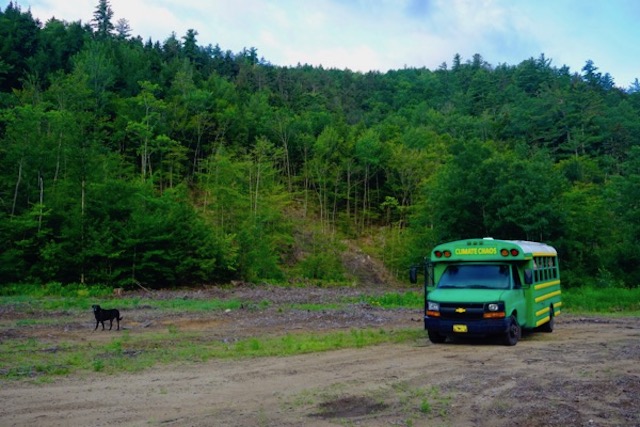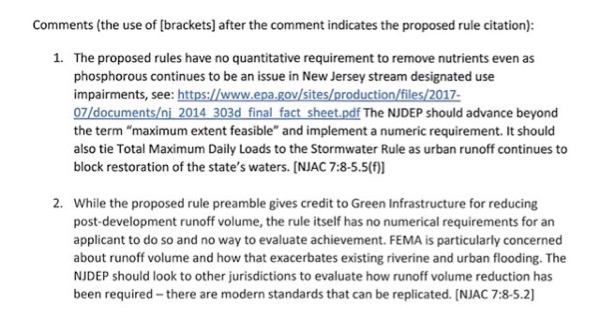Petition for rulemaking is a long ignored tool to generate public pressure for reforms and hold DEP accountable
A Citizens Guide To Regulatory Power
A Tool To Reverse Trump Rollbacks
Now for something completely different, a brief note on some good news.
I just read a story in the old Bergen Record about a “petition for rule making” submitted to the DEP by animal rights and environmental groups seeking to block this year’s scheduled bear hunt, see:
Unfortunately, the story again failed to report on the NJ Supreme Court’s decision that vests regulatory control of the bear hunt with DEP Commissioner McCabe, NOT the Fish & Game Council. That decision perfectly sets the stage for the DEP petition for rule making on the hunt.
Worse, the story was framed through the COVID lens, and missed the real “new argument” and “new wrinkle”:
The new wrinkle is the alleged danger posed by the coronavirus should the bow hunt, which is scheduled to begin on Oct. 12, be allowed to move forward. McCabe has 60 days to accept the Aug. 3 petition, reject it, or ask for more time to study the issue.
The real “new wrinkle” is the filing of a petition for rulemaking, a virtually unknown but powerful mechanism provided under a little known but key NJ law known as the Administrative Procedures Act (APA).
The APA provides the public with a tool to force government agencies to consider public demands to adopt regulations to protect the public interest.
DEP must consider and substantively respond to the legal, scientific, and policy arguments made in the petition.
The DEP’s decision to deny a petition can then be appealed to the courts.
Because it is a formal regulatory process, it also can be used to request legislative oversight of DEP decisions.
Therefore, the regulatory petition process provides a mechanism and procedural opportunity to hold DEP accountable to facts, science, law, and public demands.
A rule making petition can also provide an excellent opportunity to educate the public, generate media, and organize public support for real change. That all can be used to generate political pressure on DEP.
Unfortunately, while the business community has filed many petitions for rule making to DEP, the environmental community has long ignored this important tool (see DEP’s rule petition webpage – note that the August 3, 2020 bear hunt petition has not even been posted yet!)
Under Commissioner McCabe, the DEP has virtually abdicated its regulatory responsibilities. That is a particularly egregious failure in light of 8 years of Christie DEP regulatory rollbacks, at least 100 Trump regulatory rollbacks, and the escalation of the climate emergency.
Therefore, the Murphy DEP should be barraged with petitions for rulemaking from the NJ environmental community on numerous issues, especially to get out in front of and frame the upcoming climate regulations DEP has named “PACT”.
A rule petition is a far more effective way to influence DEP than to sit around the table and get played in the DEP’s informal “Stakeholder processes”. That’s just where DEP wants you to be – safely in the room, instead of forcing their hand legally and out in the streets targeting DEP regulations for public protest demands.
I’ve been urging NJ environmental leaders to file these petitions for years, so now I’ll rehash that as a template for citizens.
In addition to reversing trump rollbacks (and forcing NJ Democrats to walk the walk) NJ State issues include not only climate and 401 WQC, but to restore protections for Category 1 buffers; repeal of all Christie DEP rollbacks; real consideration of EJ in permitting; strengthen risk assessment; expand the “state of the art” standards in Clean Air permits to address GHG emissions; regulate GHG emission in land use and all other DEP permits; block logging in forest management and “stewardship” (and put teeth and current science in the voluntary and ancient forestry wetlands BMP Manual); make BMP’s comply with water quality standards; restrict abuses of OPRA “deliberative privilege” secrecy loophole; prohibit the use of cost-benefit analysis, unless explicitly mandated by black letter law; and adopt and implement the precautionary principle (and many, many more).
I) A Citizens Guide to Regulatory Power
Here is an example of a Petition for rulemaking I filed – note the legal requirements and format.
Another important and timely issue that should be the subject of a rule making petition is the Clean Water Act Section 401 Water Quality Certificate issue. It is the most powerful mechanism to kill pipelines and other fossil infrastructure and DEP is totally ignoring it.
In the 401 WQC context, the legal bases would be the federal Clean Water Act, the NJ Water Pollution Control Act, The NJ Water Quality Planning Act, the NJ Freshwater Wetlands Protection Act, the NJ Flood Hazard Control Act, DEP’s Organic Act (forgot the cite), and the NJ Administrative Procedure Act.
The primary regulatory bases would be the NJ Surface Water Quality Standards (NJAC 7:9B-1 et seq.), the WQMP planning rules (NJAC 7:15-1 et seq), the NJPDES rules (NJAC 7:14A-1 et seq), the stream encroachment rules, the Freshwater Wetlands rules – here’ a link to DEP rule page to provide proper citations.
The NJ state requirements are broader in scope than the federal Section 401 WQC – e.g. apply to more projects (e.g. intra-state non-federal projects) and more “regulated activity”, so be sure to make this clear.
II) Content for a 401 WQC petition
Here’s what you need to petition DEP to do:
1. Withdraw current regulations applicable to pipeline and related fossil infrastructure construction, e.g. Wetlands GP#2 and a FHA PBR #36. These DEP regulatory frameworks provide totally inadequate environmental assessment, DEP review processes, enforceable standards, public participation and environmental safeguards – while they ignore the 401 WQC powers and NJ Surface Water Quality Standards.
2. Promulgate comprehensive new 401 WQC regulations, which are integrated substantively with the upcoming Climate PACT regulations such that lifecycle GHG emissions are considered, including secondary and cumulative emissions and fugitive and/or unregulated emissions; enforceable requirements are established to limit emissions as necessary to achieve net zero or science based numeric statewide reductions; all emissions are subject to a 2-1 mitigation (or offset) requirement. These requirements must be incorporated into ALL DEP approvals for all regulated activities that emit (direct or indirect) GHGs.
3. New WQC regulations must include mandatory requirements for at least the following:
a) a water quality analysis – with a compliance demonstration (i.e. project may not “cause or contribute” to a violation, including temporary violations, of any SWQS.
The water quality analysis must require demonstration of compliance with NJ DEP’s Surface Water Quality Standards (NJAC 7:9B-1 et seq.), including “antidegradation policy and implementation procedures”, including anti degradation review, application and enforcement of numeric and narrative standards, and a required demonstration by the applicant that all existing and designated uses are protected.
b) This would include a “reasonable potential” analysis of the project’s “potential” to “cause or contribute” to an “excedence of a surface water quality standard”, including from accidents, and point and non-point sources of pollution.
As per the DEP’s NJPDES rules, this would require a DEP approved QA/QC plan and at least 4 quarters of statistically representative data on the current biological, physical and chemical water quality characteristic of impacted waters, including, among other things, existing water quality, stream flows, temperature, pH, all water quality parameters in the SWQS, and an inventory of current existing uses, especially macro-invertebrate species that are vulnerable to pipeline construction impacts and things like the blowouts and mud deposition we’ve seen repeatedly.
You might want to suggest that the prior DEP method for reviewing disturbance in a C1 buffer could serve as a template for some of the biological and water quality characterization and that current NJPDES “antidegradation policy and implementation procedures” and “reasonable potential” analysis should be considered as well.
The same requirements must be established for demonstrating compliance with the NJ DEP groundwater quality standards.
Obviously, you need to lay this all out – might want to look at NY DEC pipeline 401 WQC denies for technical details.
Let’s get this party started!
There is sufficient information teed up to get petitions filed soon.
Members of NJ environmental groups should contact their leaders and professional staff and demand that they get off their asses on this.
[End Note: I just got a great email question from a dedicated citizen activist:
Being fairly new to this , why don’t the enviro groups use this more?
Here’s my reply:
It’s perceived as too aggressive. It puts DEP on the spot and forces them to make a decision. It embarrasses the Commissioner and the Gov. Many ENGO folks don’t want to do any of that or bite the hand that [grant] feeds them. They would rather “work with DEP” and play the “Stakeholder” games.
Plus, most of them know absolutely nothing about regulations – or are too lazy to work on them. Not sexy. Too much like work.





